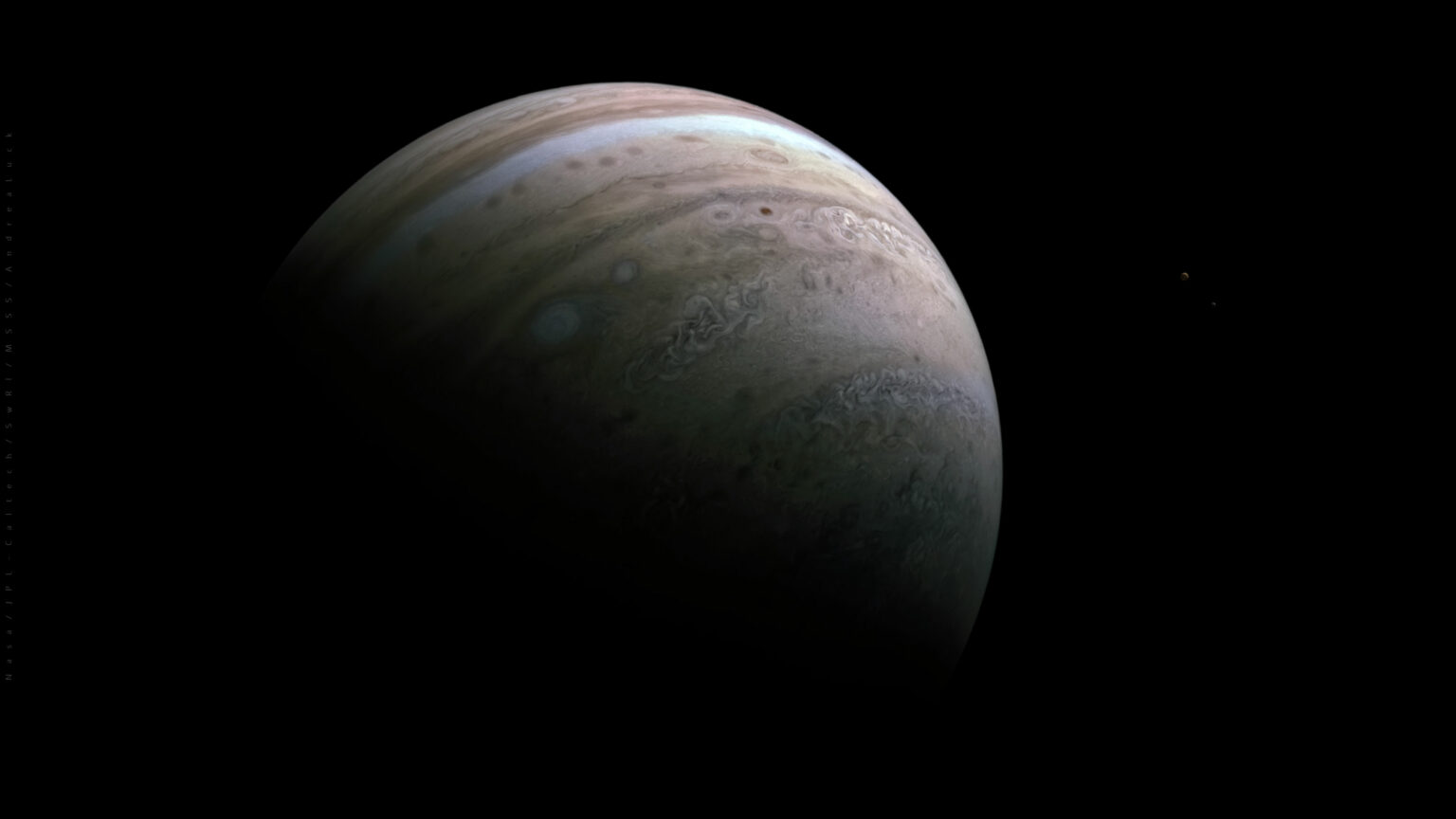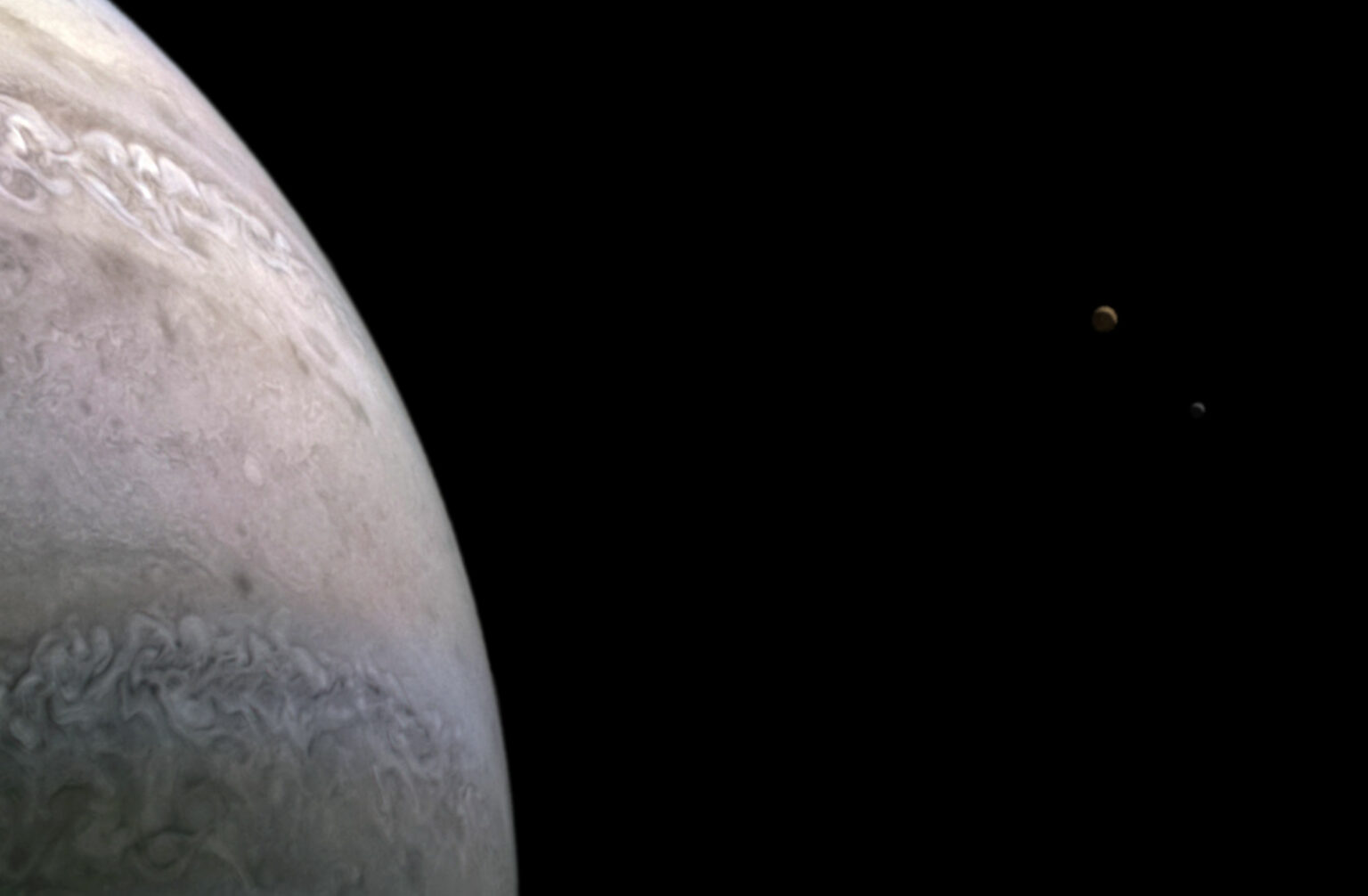Beautiful photos of satellites of Jupiter, Io and Europe were transmitted to Earth by NASA’s spacecraft Juno. A recent image of the two satellites was taken by Juno during the spacecraft’s 39th close flight near Jupiter on January 12. At that time, the spacecraft was at an altitude of almost 61 thousand km above the clouds of Jupiter, about 52 degrees south latitude.

A new raw photo of Jupiter was retouched by scientist Andrea Luck using the JunoCam device. The resulting picture shows a stunning view of the Southern Hemisphere of Jupiter with two of its numerous satellites on the right of the frame. As you zoom in, you can discern Io on the left and Europe on the right.

Jupiter’s moon Io is the most active volcanic body in the solar system. Hundreds of volcanoes are scattered on its surface, some of them erupting sulfur plumes hundreds of kilometers high. Europe is the smallest of Jupiter’s four giant Galilean moons. According to scientists, there is a global ocean of liquid water beneath its icy surface. Previous observations have revealed evidence of possible water geysers erupting from the polar region of Europe. This suggests that there is liquid water in the subsurface ocean of the satellite, that breaks through cracks in the ice crust.
The future of the Juno mission
The Juno spacecraft is expected to make its closest flight to Europe in September 2022. During this flight, the probe will use several of its scientific tools to explore Europe in more detail and obtain even more stunning views of the mysterious satellite.
According to NASA, the Juno mission will also approach Io in late 2023 – early 2024. The joint spacecraft mission is currently expected to end in September 2025. Juno will be followed by two key spacecraft designed exclusively to study the giant’s satellites: NASA Europa Clipper mission and European Space Agency JUICE research apparatus.
Recall that earlier scientists compared the Earth and Jupiter and even found some similarities in these planets.
We have also compiled a list of 12 interesting facts about Jupiter.

